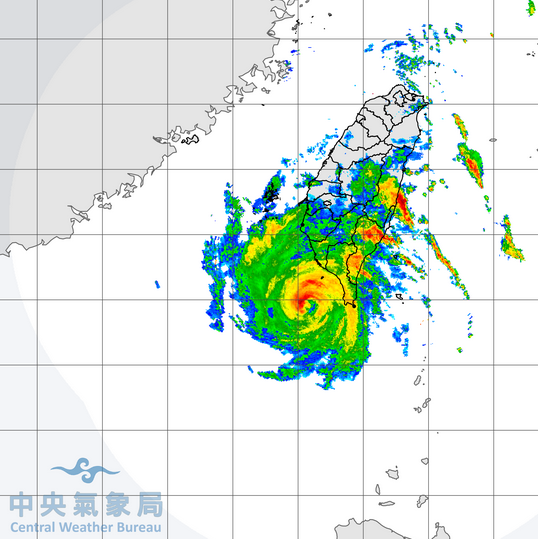Tropical Storm Lionrock dropped heavy rain on parts of northern Vietnam on Saturday night. At 11:00 p.m. EDT on Saturday the center of Tropical Storm Lionrock was located at latitude 20.4°N and longitude 107.1°E which put it about 25 miles (40 km) southeast of Haiphong, Vietnam. Lionrock was moving toward the west-northwest at 15 m.p.h. (24 km/h). The maximum sustained wind speed was 40 m.p.h. (65 km/h) and there were wind gusts to 50 m.p.h. (80 km/h). The minimum surface pressure was 995 mb.
Tropical Storm Lionrock dropped heavy rain over the part of northern Vietnam between Hanoi and Haiphong on Saturday night. The heaviest rain was falling in bands in the western half of Tropical Storm Lionrock. Bands in the eastern side of Lionrock consisted primarily of showers and lower clouds. Winds to tropical storm force extended out 120 miles (195 km) from the center of Lionrock’s circulation.
Tropical Storm Lionrock will move south of a high pressure system over China during the next 24 hours. The high pressure system will steer Lionrock toward the west during the next day or so. On its anticipated track Tropical Storm Lionrock will move across northern Vietnam and northern Laos. Lionrock will bring gusty winds and locally heavy rain to parts of northern Vietnam and northern Laos. Heavy rain could cause flash floods in some locations.
Elsewhere over the Western North Pacific Ocean, Tropical Storm Kompasu was spinning east of Luzon and Tropical Storm Namtheun formed east of the northern Marianas. At 11:00 p.m. EDT on Saturday the center of Tropical Storm Kompasu was located at latitude 15.9°N and longitude 129.8°E which put it about 470 miles (760 km) east of Luzon. Kompasu was moving toward the northwest at 9 m.p.h. (15 km/h). The maximum sustained wind speed was 50 m.p.h. (80 km/h) and there were wind gusts to 65 m.p.h. (105 km/h). The minimum surface pressure was 990 mb. Kompasu is forecast to move toward the west-northwest and to strengthen.
At 11:00 p.m. EDT on Saturday the center of Tropical Storm Namtheun was located at latitude 17.0°N and longitude 160.3°E which put it about 980 miles (1580 km) east of Alamagan. Namtheun was moving toward the west at 8 m.p.h. (13 km/h). The maximum sustained wind speed was 40 m.p.h. (65 km/h) and there were wind gusts to 50 m.p.h. (80 km/h). The minimum surface pressure was 1000 mb. Namtheun was forecast to move toward the northwest and to strengthen.

